Introduction Judith A. Torres
Interview Heidrun Milan and Judith A. Torres Images 汉荷设计 (maison h)
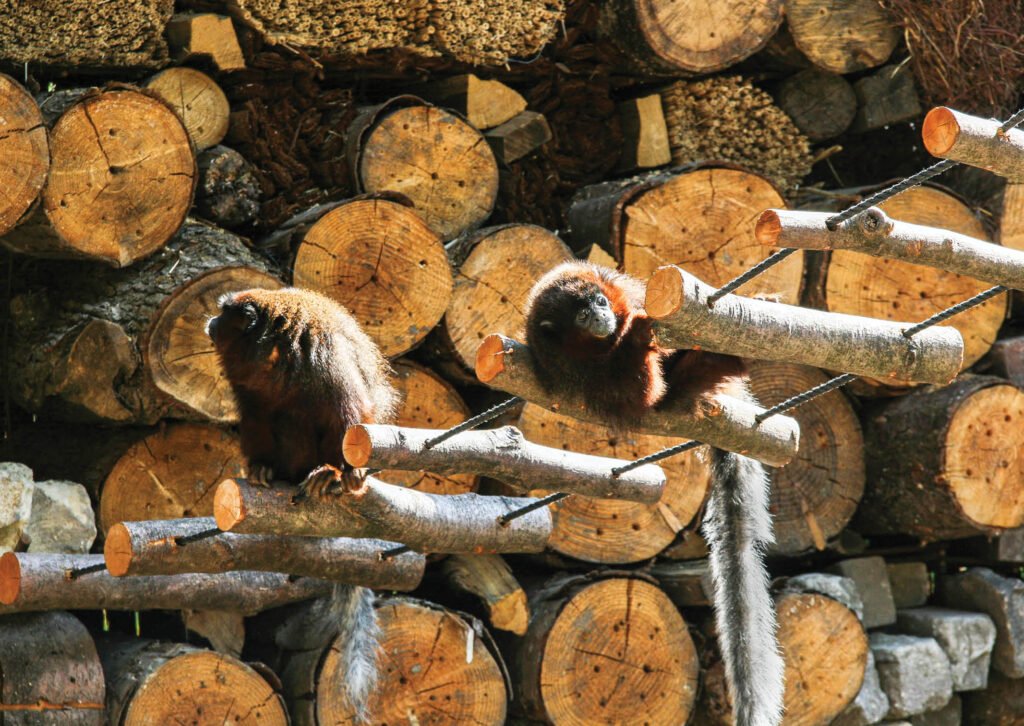

“I used to desire to be the next Rem Koolhaas. And then I had a moment where I thought, ‘No. No. I’m going to be better than Rem Koolhaas.’”
One can forgive Martijn de Geus his thoughts. He was 19 years old and had won Delft University of Technology’s Who comes after Rem Koolhaas? competition. He and his team would build their winning project, the Black Box, beside the school’s Faculty of Architecture building.
The intense young Dutchman makes a little scoffing sound—“Hah! I know, it’s stupid, of course. But now, I don’t. I don’t.”
While splendiferous vertical gardens existed 5,000 years ago, no one in Delft was covering buildings with hydroponic green wall systems back in 2005, when De Geus’ team submitted their entry. It took the students two years to construct the pavilion, which he and his flatmate modeled out of old clothes in their dormitory room because “no one thought it would work.”
What made the Black Box truly remarkable was that it was designed to filter a nearby stagnant pond, use its nutrient-rich water to feed the plants and then return filtered water back to the pond, allowing both building and pond to thrive. When construction was completed, however, media reception was lukewarm.
Although his accomplishment would be celebrated a couple of years later, when vertical gardens became all the rage in Europe, the disappointed De Geus packed his bags and said goodbye to a girl he’d loved since the day she was born.
Her name was Gyasi. He also said goodbye to her parents, Bongo and Dalila, and the rest of the clan of gorillas that lived on an island in Apeldoorn. He’d fed and cleaned up after them since he was in high school, working as a zookeeper for six years in Apenheul.
“Apen means monkeys or primates in Dutch; it’s the plural of aap or monkey. Heul is a traditional word to describe a safe place, or place of refuge and care. So, together, apenheul means ‘a place of care and refuge for monkeys.”
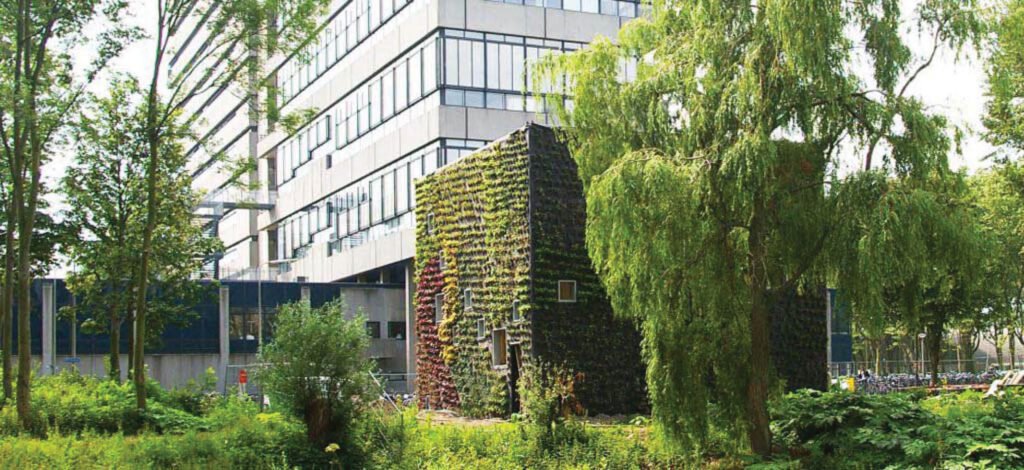

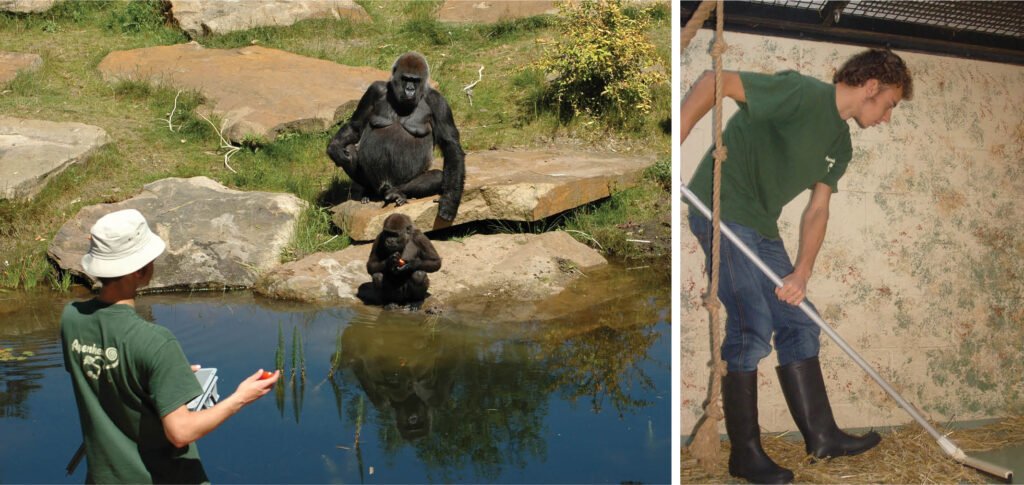
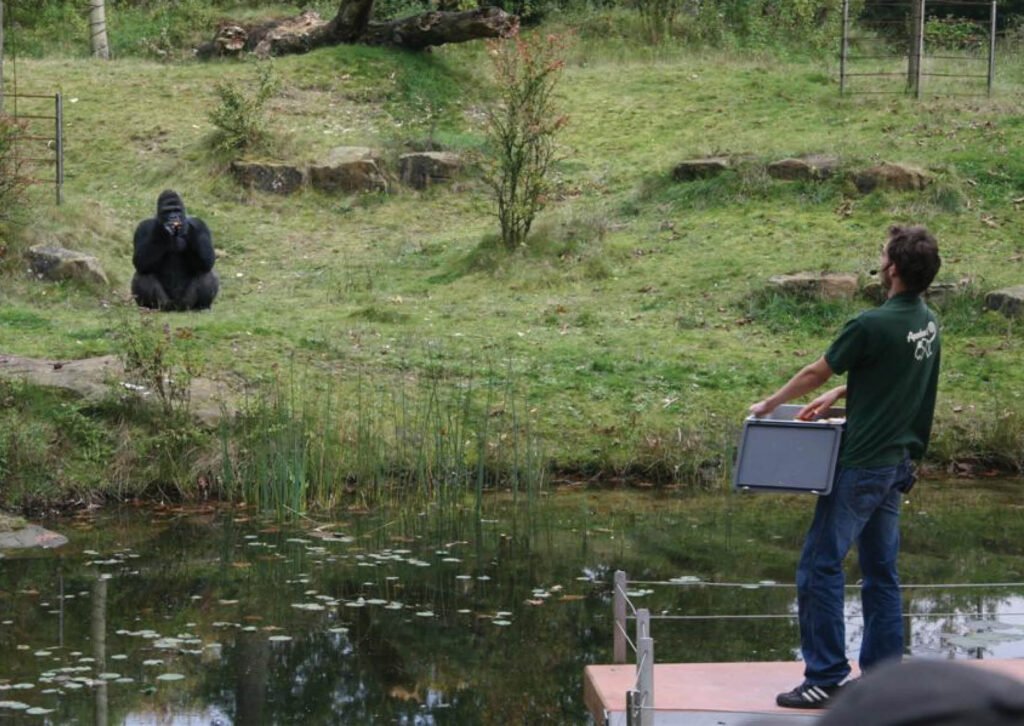
De Geus says his six years in Apenheul with Bongo, Dalila, and Gyasi has everything to do with the architect he is today. It was a state-of-the-art zoo whose owner believed that people enjoy animals when animals are happy. So instead of putting them behind bars, he gave them a large forested area where they could be themselves and people could watch their natural behavior.
De Geus watched Dalila care for her infant and Gyasi grow and explore her world while older gorilla children played and the teenagers went off to do their own thing—so very much like human beings. His time in Apenheul ingrained in him a deep respect for nature and a weighty sense of responsibility for the impact of design on people and animals’ growth and wellbeing.
His travels would take him to the US and different countries in the East. He has been based in Beijing since 2010, trained under the illustrious Li Xiaodong at Tsinghua University, and now teaches in the International Master’s Program in Architecture there. In 2015, he established a practice with his life partner, Han Zhang.
“We have a Chinese name and it is 汉荷设计 (hàn hé shè jì ). 汉 (Hàn) means Chinese. It is also the name of my wife, 涵 (Hán). 荷 (Hé) stands for 荷兰 (Hé lán), which means Dutch or the Netherlands. It also stands for my Chinese name, 和马町 (Hé mǎ tīng). 设计 (Shè jì ) means design and theory. So our name means Chinese Dutch Han Martijn Design Theory company. I did not come up with that myself, my professor helped me find that name. There’s no direct translation, so we use a kind of meaningless international name, maison h. We thought it would be nice, House of Han. But otherwise, it’s meaningless.”
In his hour-long interview over Zoom with interior designer Heidrun Milan and me, De Geus frequently praised Chinese ways of thinking and acknowledged the positive influence his professor and wife have had on his once impatient and ego-centric ways. He often brings up how he and Zhang are very conscious about being inclusive, involving users in the planning, understanding where people come from, what their fears and motivations are, of being conscious of his temper and being flexible and more patient.
While he doesn’t mention the word “empathy” once in our conversation, it’s clear that it is a core value in their practice, design process, teaching, and working atmosphere within the office.
“Ten years ago, I thought, ‘I’m here (in Beijing) now, and I’m going to solve everything.’ But it doesn’t work like that. I understand now that I am actually a part of this change.”
And change he has, says his partner, Zhang, “in a very good way.”
(Read Han Zhang’s perspective on the intertwining roles she and De Geus play in 汉荷设计/maison h and her editorial direction for ArchDaily China in separate articles also in Kanto.com.ph.)
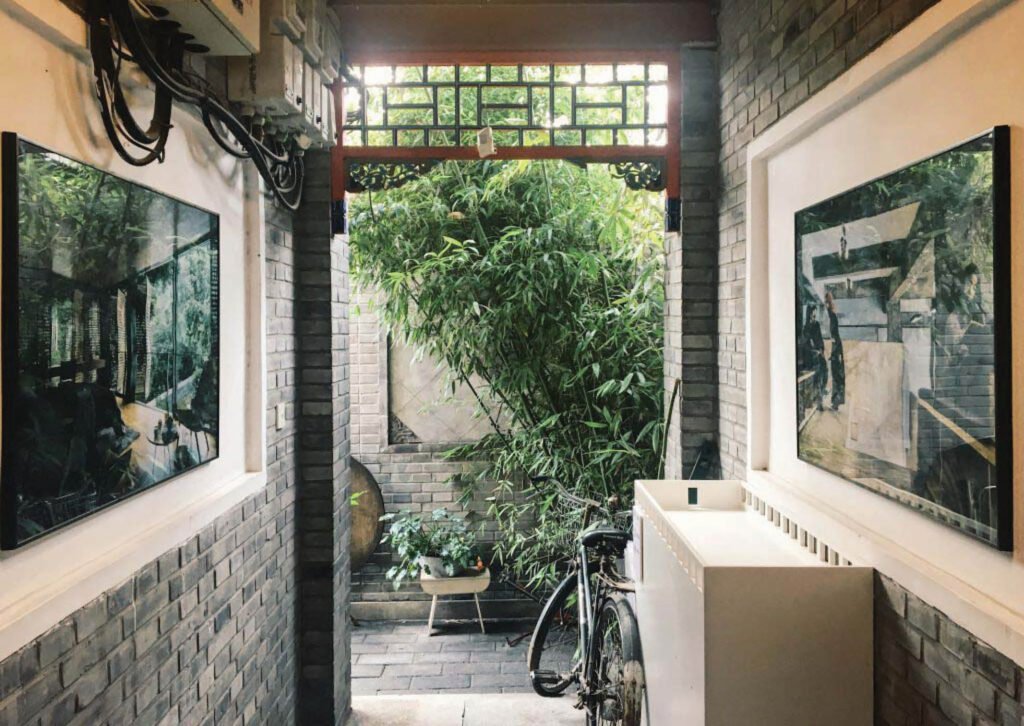

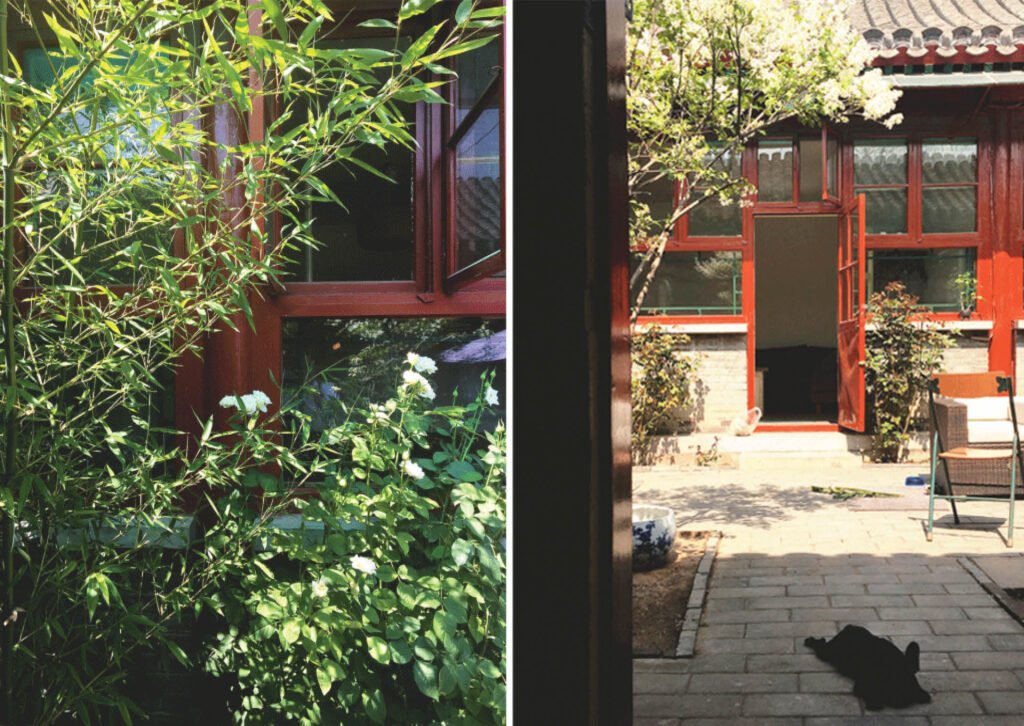

Judith Torres: Martijn, your website says: “We make places. Creative places, educational places, public places, private places, natural places, healthy places, and above all, loved places.” How do you design a place people and animals love?
Martijn de Geus: First of all, it’s important to say we are not an architecture firm. Of course we make buildings, but we are not doing that for the sake of making buildings, for the sake of making objects. We make places for people. It started with my work with the gorillas. We made a place for them in the zoo I was working at that was really according to their natural behavior, rather than the architect’s idea or notion.
I found that there are some architects like this one (in the picture) behind me, Hermann Herzberger, one of my mentors in Holland, was doing a similar thing in school. He was observing how kids use places and found you can enable certain behaviors. Rather than creating form to fit a function, he saw architecture as an enabler. I really liked that and realized that if you do that, then also it doesn’t matter how the architecture looks like anymore. It can still be beautiful or not, but it’s about how people will appropriate it (that matters).
Torres: Enabling people and animals is what makes them love a place?
Well, I’m still young and trying, but that is what we have seen so far. We have tried to really look at what people want and need for their use in a space and it becomes their own place.
Torres: Next your website says, “We are a team that reflects the contemporary social cultural change. We are post-western.” This struck me because we’re in a time of extreme nationalism and xenophobia. What does post-Western mean? Are you denying your roots?
No, I’m still pretty much Dutch. I look Dutch, I think Dutch, I am Dutch. I’m from a Western background. However, what I mean by that—and I like how you framed it in light of current events because I came up with this a few years ago when the world was slightly different and it is becoming more and more extreme—is the notion that not everything in the West is the best. We should go beyond the belief that everything in the West is what should be adhered to or should be put first. And that goes same for me. I’m Dutch, I love Holland, I love different aspects of it, but it is not the Messiah, it’s not number one.
Torres: An attitude of humility you impose on yourself?
Yes, right, it is very much that.
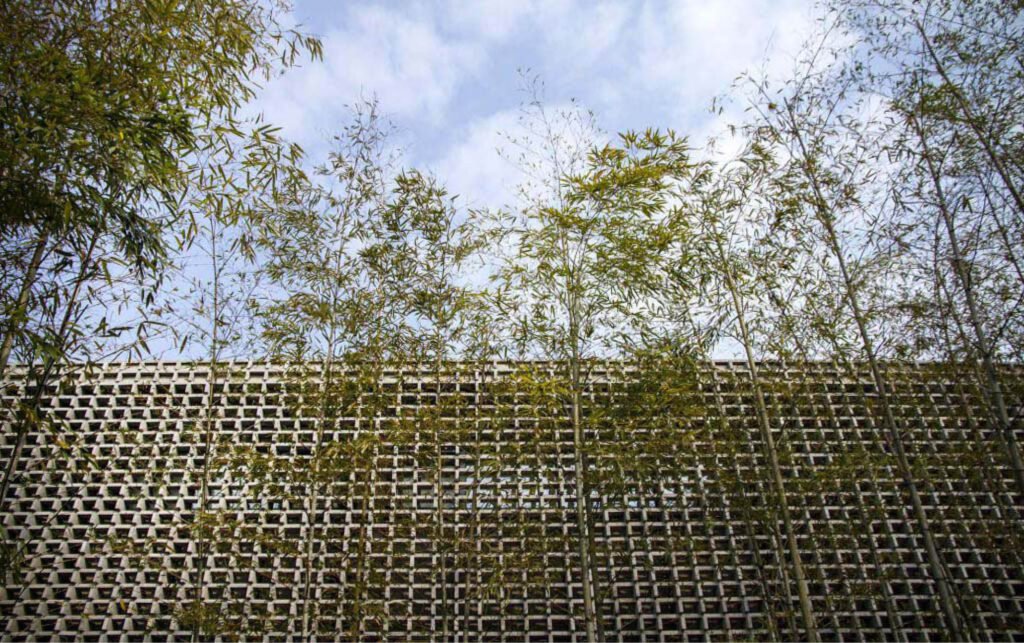
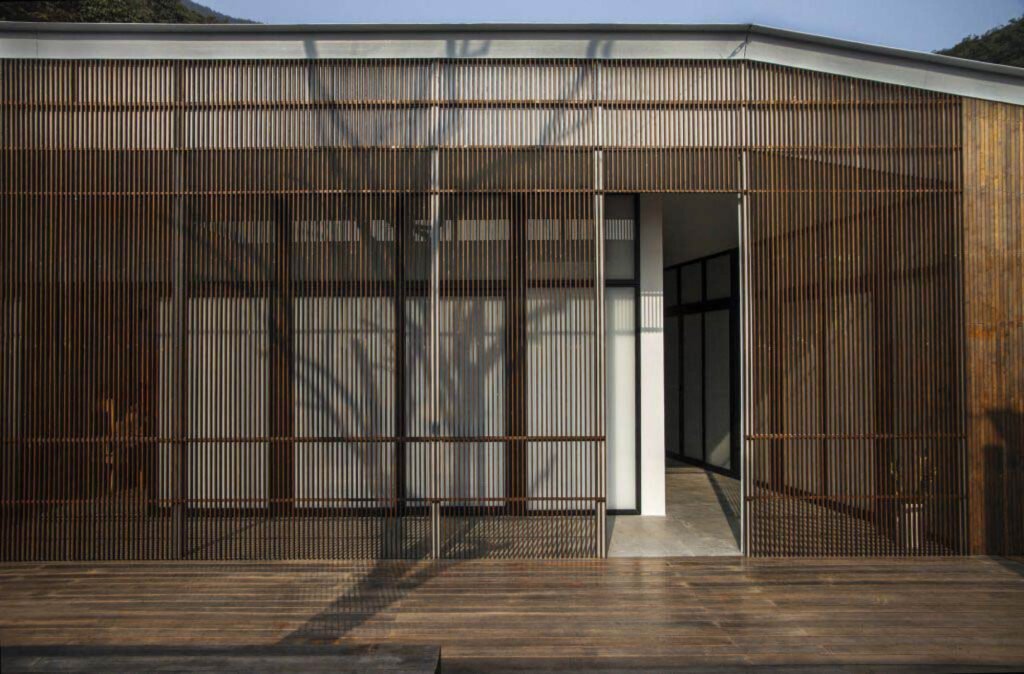
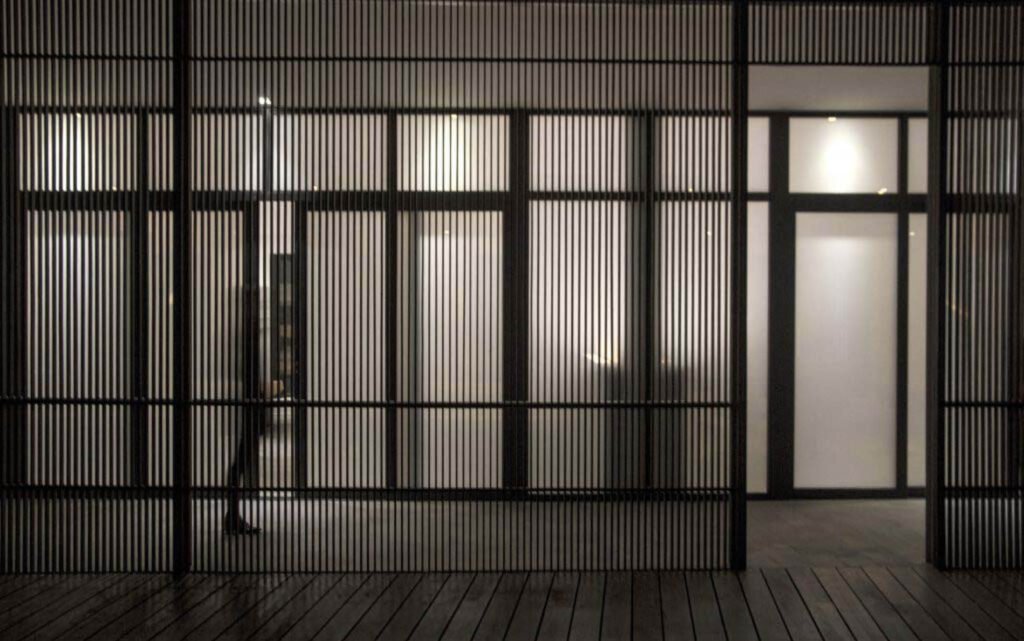



Heidrun Milan: When did you realize and what made you decide to be post-Western in approach? Did you have an epiphany?
I didn’t set out to become like that. I realized it when I was doing a project for school, which was a small green box in Delft. It was a sustainable building, full of plants, made
of wood, and the people in the school and the media were so against it.
“Why do this?”
“Why can’t you use concrete?”
“You cannot do this because this is not the way we do things.”
And I realized, “Why are you all so stupid, why are you so caught up in your own thinking? Why can’t we look outside of that?” And I realized then I have to go somewhere else to look (outside of our thinking).
Milan: Where did you go?
I first went to the US but that was not good for the openness of ideas, so then I went to the East and I found this whole new world of ideas, of thinking, and then I gradually learned that the Eastern approach was much more about, “Am I really the best here or can I learn from others still?”
The Dutch approach is: “We are the best, we have transformed our country, we have made water where there is earth, and earth where there is water, so obviously we are number one and we are so great.” I realized that’s not right because you exclude so much, you shun others.
In China, really, it’s incredible, everybody is so open to do things differently. If you come with something better and you can show them, they go for it. It’s really remarkable. I have not experienced that in Holland or in the US.
Milan: So there is a strong Eastern influence in your approach now since studying in China?
Yeah, really. I don’t realize that so much myself, of course, because I’m just here, being who I am. But when we started doing projects in the Netherlands, people were so shocked and struck by our approach.
“Wow, you’re so different,” they’d say.
“You’re much more mediating and able to cross the environment and the landscape and the building into one practice.”
“You do all of that? You’re quite fluid.” And I can do curved shapes now.
Torres: What?
In Holland, you’re not allowed to do curved shapes—everything has to be square, you know. They taught me that in Delft. “Cirkel is stront.” Circle equals shit. So you need to make designs square, rational, rectangular. While here, I learned you can be fluid. You can be more free, you can be more open, show more humility.
Torres: Is that an Asian influence, a Chinese influence, or is it Han’s influence?
It’s a combination but it started with my professor, Li Xiaodong. The great thing with him is he did his PhD in Holland (at TU Delft) so he understands where I am coming from.
When I came to China, he said, “Martijn, you’re very capable but you need to calm down. You need to learn some t’ai chi, be a bit more relaxed.”
He initiated the influence. I was very frustrated with that, you know. I was like, “I wanna learn, I wanna learn now, and I wanna do stuff!”
Torres: After saying you are post-western, the website says, “We start from our environmental responsibilities. We observe people’s needs and behavior.” Is that part of being post-western? Isn’t the notion of climate change a Western realization?
In the US, I worked for a German office called Behnisch Arkitekten and they were the forerunners of sustainable architecture at the time, in 2008. I went there because I wanted to learn that. But I realized that societies in the West don’t reciprocate the urgency.
But in China, 80 percent of people—and they did a sample of people all across China in Mongolia, Tibet, everywhere—80 percent of people believe climate change is real and is caused by human interventions because they see it with their own eyes. The farmers, the city people, everybody can see it. It’s undeniable. While the realization in the West is not so much there. In the West, we can deny that because the forests that we cut down are not in the Netherlands, they are in Indonesia.


Milan: You’re against the Western approach, which is self-centric. How do you separate ego from design?
Yes, as a Westerner, you are very self-centric. I also used to be so much more self-centric. As a Dutch person, I used to believe I was the next Messiah, I was going to save the world and so forth. That has changed a bit.
But the ego is important in the design process because you need to be a strong person because you need to be able to have these strong ideas and extrapolate the core issues. However, you need also to be able to let go of that and to somehow be more selfless. What that means is it is to realize that you are doing something for a greater good.
The process is not happening because of people wanting to realize your dream, no. You are helping them to realize what they want—or what the world needs, or what somebody needs. So there is the understanding that your ego is a part of something else.
Milan: I love that concept. How did you come to this understanding?
Hmm. I don’t think that there is one way. Han played a big part because when I met her, I was still thinking that I’m really fantastic. Of course, it helped that I came to China and had to rebuild my life. Because in Holland I was already a bit known, established. But here, nobody knew me, I couldn’t even speak the language. It was very humbling because all of a sudden, I was helpless. I had to depend on others for help in everything. The people were so open, they helped me a lot. My professor helped me a lot. That helped me professionally.
And then I met Han.
And I realized I always wanted to change the world. I wanted to make the world a better place. Because of my gorillas, yes, Gyasi. Because I saw the world around me, I saw the world turning bad. But I never realized that in order to start making a better world, you first need to be sure that you as a person embodies that. And I was not always kind or nice in the way I talk to people. I was sometimes condescending or derogatory. I realized you can’t do that. You can’t be this egotistic person and then expect others to help you change the world into a better place. That doesn’t work. Han helped me realize that.
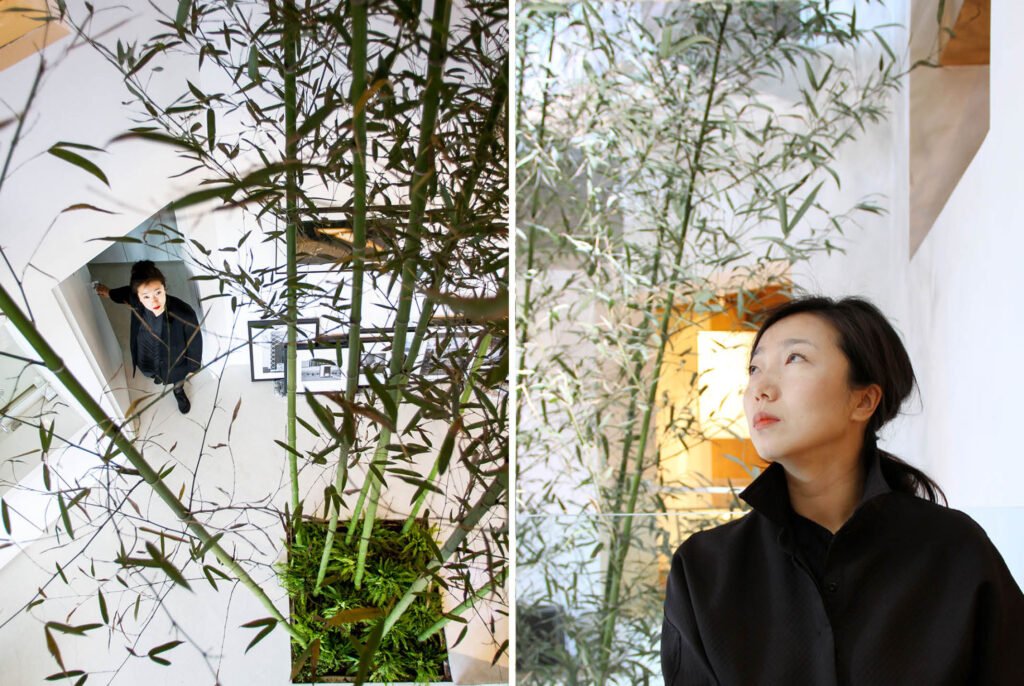

Torres: How is Han “the key to making creative ideas a reality?”
It’s very difficult how two people work together. Because I do more of the design work, normally, I direct more of the design team. However, because I do more of the work doesn’t mean the influence is all mine. With Han, she always keeps me in check, first of all.
She would always say, “Martijn, this is really shit, why are you doing that?”
And I would think it’s amazing—”But it’s great!”
“No, it’s not.” And then we would argue. The next day I realize, yes, it’s bad. I can do better. She’s the key to really pushing the creative ideas. Because you cannot always push yourself. Because you get in this dream that everything’s great.
Or sometimes, you think it’s really bad and she can say, “Well, actually, Martijn, there is potential in that, you just need to push through.” So that’s really helpful.
Secondly, she’s trained me to be less confrontational and more mediating. So that’s why I say she’s the key to realizing ideas, whether it is in the initial concepting, development, construction, or realization.
Milan: You’re like yin and yang, a balance of East and West.
I would say we are complementary. She might say we just hate each other and are opposites! (Laughs) You can ask her.
Torres: The convictions you stated in your TED Talk, they comprise your life philosophy. What are the values that give shape to your design?
That describes the core of what I believe in now. And that is true. You cannot ask others to do something if you don’t do it yourself. You should start the change yourself, you should embody the change yourself. That’s just the start. But then, of course, it’s all about the values and that is your question. So what values do you embody? It starts in a very personal way.
I understood especially in the past few years, the position between man and woman in different cultures is absolutely unequal. I see that when I teach and I see it in the field. I don’t want to create a hostile environment, an exclusive environment. So we start inclusively. So that’s one value. This inclusiveness is also towards our clients. We cannot work with a client that doesn’t embody those values.
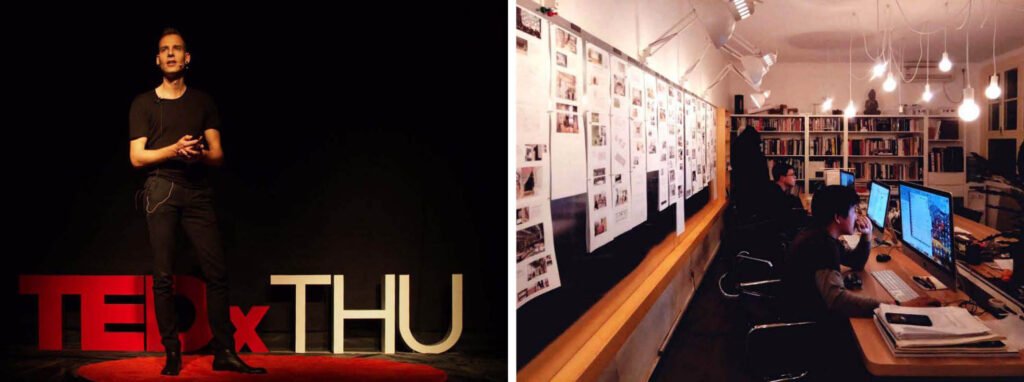

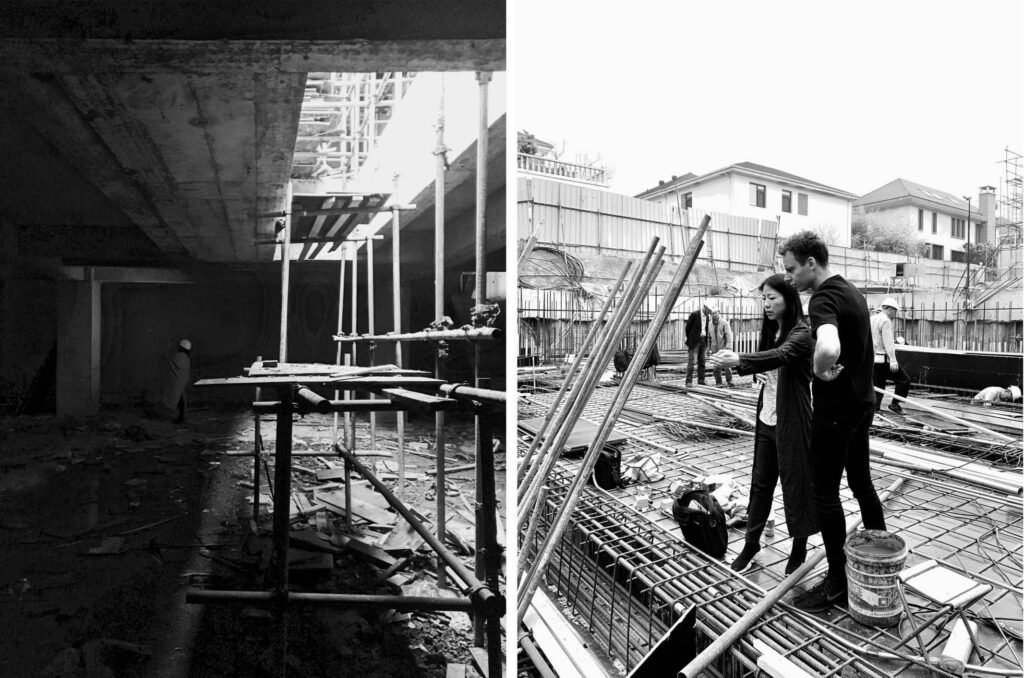

Torres: You say no.
Yeah, and then sometimes we argue about it. Sometimes Han wants to say no. Sometimes I want to say no. But yeah, we do say no because we realize—and that’s been a journey—because how are we going to express these values? And, again, if you are doing all this stuff you don’t believe in then you are a hypocrite and people will also not believe in you, and so it doesn’t work. So we don’t really work with companies, we really don’t work with anonymous entities, but we work with the people in those companies.
For instance, we are working with a big Chinese developer—and I always was against working with developers—but this lady we are working with, she is visionary and wants to start doing things differently. Not developing new stuff, but regenerating a large part of the inner city in Beijing. They have never done that. We have never done that. But we understand we share the same values. So that’s great. I love working with her and her team. And so it is possible (to say no) because if we are strong in our values, other people who reciprocate those values will find you.
Torres: Inclusivity, then, is your all-encompassing value.
Yes. Inclusivity is a good term for people but also for the environment. We are not excluding the environment. We are part of the environment and if you come to our office in the center of Beijing—which unfortunately now is difficult—we have a small courtyard, we have five chickens, we have two dogs, two birds, and some fish. You know they walk around, come around when the door is open and the weather is good. We treat the animals like they are part of the family—of course, the dogs sleep with us, not with the chickens! But it’s part of that attitude of inclusiveness towards animals and towards the whole environment. Yes, inclusiveness I think is a good term.
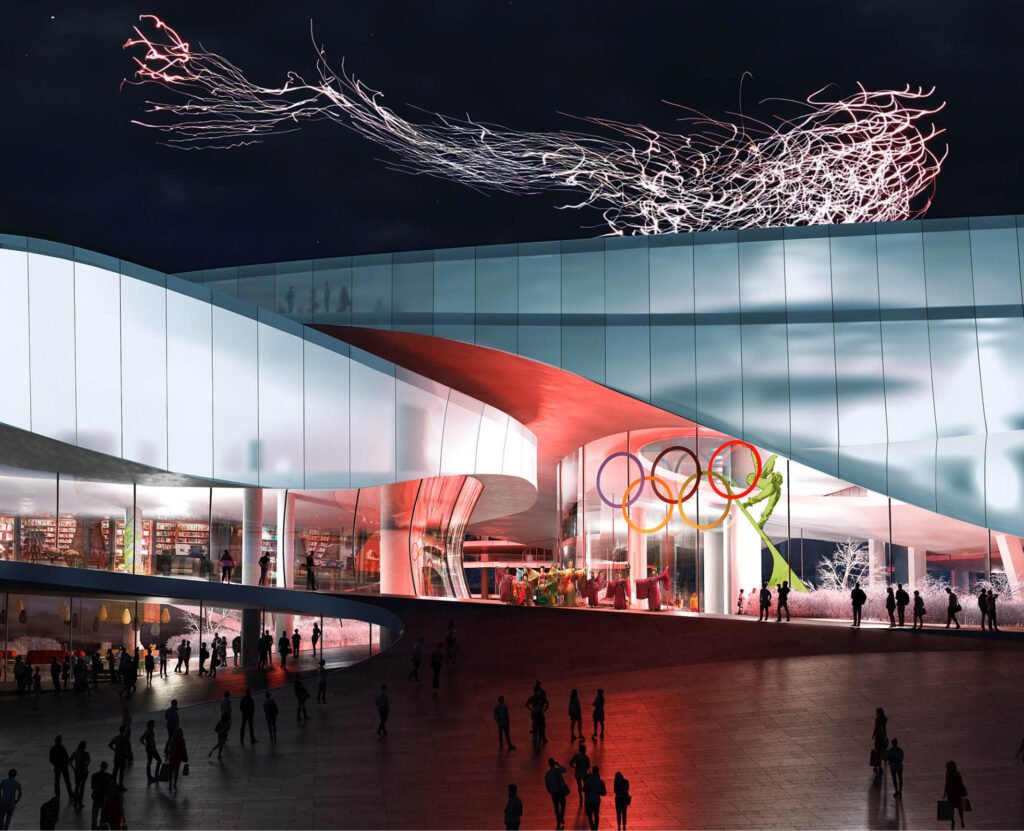

Torres: How do your values direct the way you hire and train?
This is also a learning curve for us. At first, we thought, oh, we are like this so we are going to be very friendly. And then people come, we seem pretty casual in the office, I’m drinking my tea, we’re all going around with dogs, chickens, and birds, but then we are still very serious about what we do. It’s been difficult because people come from work environments where they are on edge and under pressure, and here are totally super relaxed. It’s hard for them to figure out the balance. It takes a bit of training.
So whenever we hire somebody new, I always have a minimum three months’ trial. We use that time for you to get used to us and for us to get used to you and see if it’s going to work out. Sometimes after three months, we find the personality doesn’t quite match. Skills we can always learn. But the personality is important. Your own way of taking responsibility is important.
What I find works very well is my students. I organized and teach the master program in Tsinghua University. I teach the full first year, every studio, so that’s four. There are four different topics. Some other teachers come in and out but I teach all of them, I’m the constant factor, and I get to know them very well and they get to know me very well. So after that, typically in the summer, I ask some students if they want to try an internship or join a competition project with us. So you build up this bond. It’s long term, but it’s much more reliable.
Torres: I love how you’re investing in the future. How do your values affect the way you deal with contractors?
Ah, contractors. Contractors don’t care so much about these values normally. But you also have to respect that. Everybody has their own interest and it’s very important. Han always says you have to understand what is at stake for people, what are their interests? So, of course, I get very annoyed and also sometimes angry when I go to a site and see it’s not right and they cut some corners or what-not. To get angry is not bad. But you should not get angry for no reason. You should not get emotionally angry because it should be clear that something is wrong. That’s okay.
So I’m trying it in that way. But if I feel like I’m really going to lose it, I step aside for a bit, rather than being confrontational because China is not a confrontational culture. And you cannot just tell somebody off because they’ve done something wrong. While I’m not Chinese, I can do that sometimes, but I try to limit that. If it’s a really big problem, I tell Han first and she goes to deal with it. If it’s a minor problem, I deal with it myself.
Torres: You wanted to change the world and decided to go where you could make a difference. In your talks, you show how polluted Chinese cities are and have called some of their buildings “zoos for people.” Do Chinese audiences resent what you say and how do you respond?
That’s a good point because I’m very against this Messianic message and so this seems hypocritical because I am at the same time saying that I came here for that. First of all, what makes a big difference is your attitude. I did think I was this kind of Messiah and I was going to change the world. Ten years ago, I thought, you know, I’m here (in Beijing) now and I’m going to solve everything. Which is not right.
So when I give a lecture like or a talk, I also say it like that. “I grew up as a Dutch person who believed I could change the world on my own because we did it in Holland. And therefore, I thought, in China, they need my help so I’m going to do something about it. But it doesn’t work like that. And that is absolutely wrong.”
I use that statement to say that that was wrong and I understand now that I am actually a part of this change.
That’s why I love being here because everybody can understand that. It’s clear that the skies were terrible ten years ago. Everybody acknowledges that. It’s not just me or foreigners saying that. Local people are saying that. I’m not saying like, “Look how great it is in Holland.” No, I’m saying, “This is a problem here, I think we can work together to do something about it.” I think that approach is not a problem. I’ve never heard from anybody saying, “Wow, that’s so terrible.”
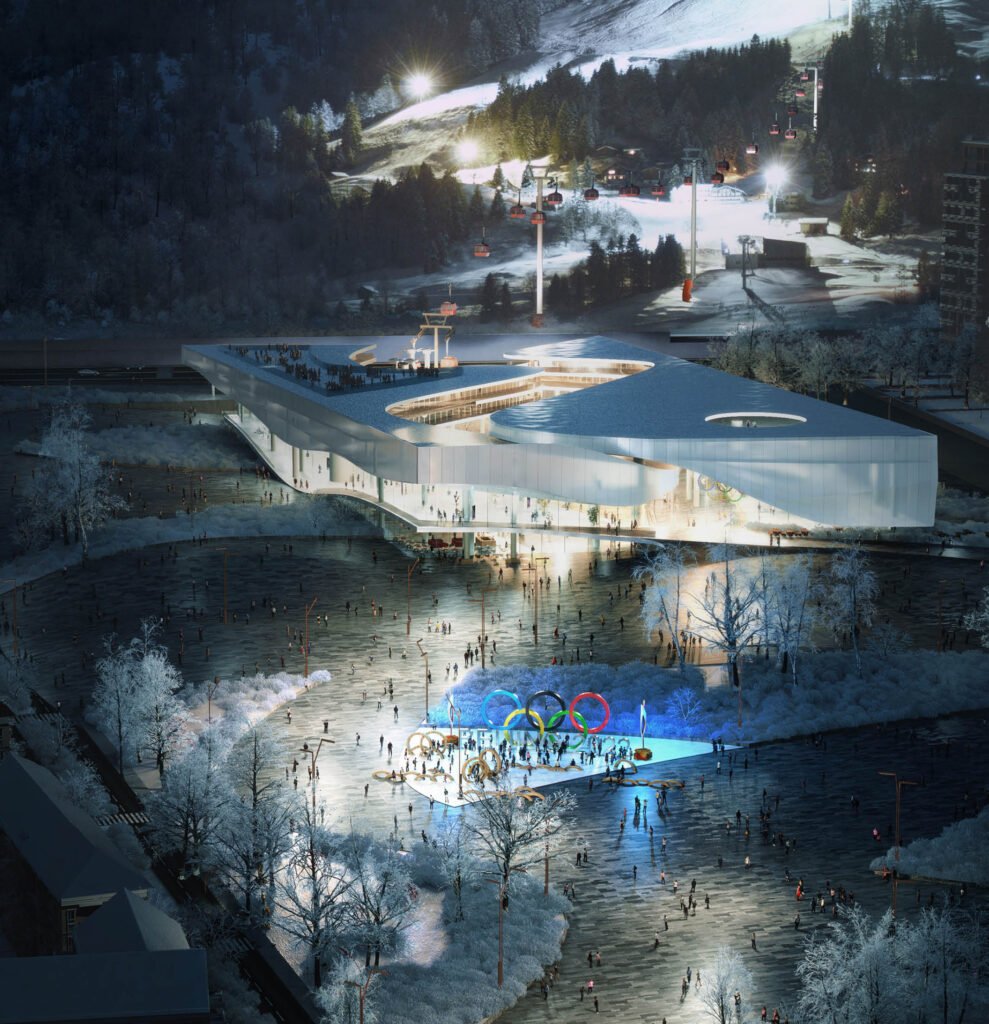

Milan: Filipino designers and the academe are still wringing their hands asking whether there is such a thing as Filipino architecture. I feel it has a lot to do with the wholesale destruction of our heritage buildings. How would you define modern Chinese architecture, Martijn? Are urban settings losing their Chinese identity since Western architects have flooded the country? What is your response to this situation?
Ten years ago this topic came up a lot in every conversation with Chinese architects. They said we’re looking for Chinese architecture, it should have Chinese characteristics. You know, nobody in Holland ever asked, “Am I a Dutch architect?” And Rem Koolhaas did not go and say, “Hmm, is this Dutch?” No. Nobody asked that question. It was other people outside of Holland, that would say, “Ah, that’s really Dutch.” And then we were like, “We don’t care. We just do what we’re doing.”
I think it’s a matter of confidence. If you are confident about what you do, it doesn’t matter what it is. And I feel that’s the problem again with the ecology and inclusivity because for centuries, people in former colonial countries and non-Western areas have been made to think that their own is not good enough. Why not?
I have not been to the Philippines yet, I was supposed to last year, but we just didn’t make it due to COVID-19. But I’ve been to amazing Eastern countries from Japan to Sri Lanka, and for a foreigner, it’s pretty easy to say, “Oh, this is the vibe here,” and, “This is the vibe there.”
It’s the same now that I go back to the Netherlands, and I can feel yeah, wow, that is so Dutch. And sometimes, I feel embarrassed. Oh my god, they’re so narrow-minded, these people, and they are so pretentious. And then I realize, “Hey, I’m also Dutch.” If you’re always in there, you don’t know if you should feel confident about it.
But if you do what you believe in and you do it for the right reasons, you will be confident. You will realize that you are Filipino or Chinese.
Here, a lot of the large buildings in the 1980s were done by Chinese architects, but then in the 1990s, they were all Western architects, and in the 2000s, still Western architects. So Chinese architects have had to reinvent themselves.
My professor, Li Xiaodong, was one of the first who did. He went to the countryside, to a remote region in the Yunnan, and built a school there because people there needed a school. He raised the money. He did it on his own because, “I believe in this, I want to do this, this is good.” So he did it! He then did more projects in the countryside. And now, he just finished a large school in the urban metropolitan area in Shenzhen.
You have to find your own starting point first. Of course, you can’t immediately go do an airport. So you need to have patience and time to practice and then go.
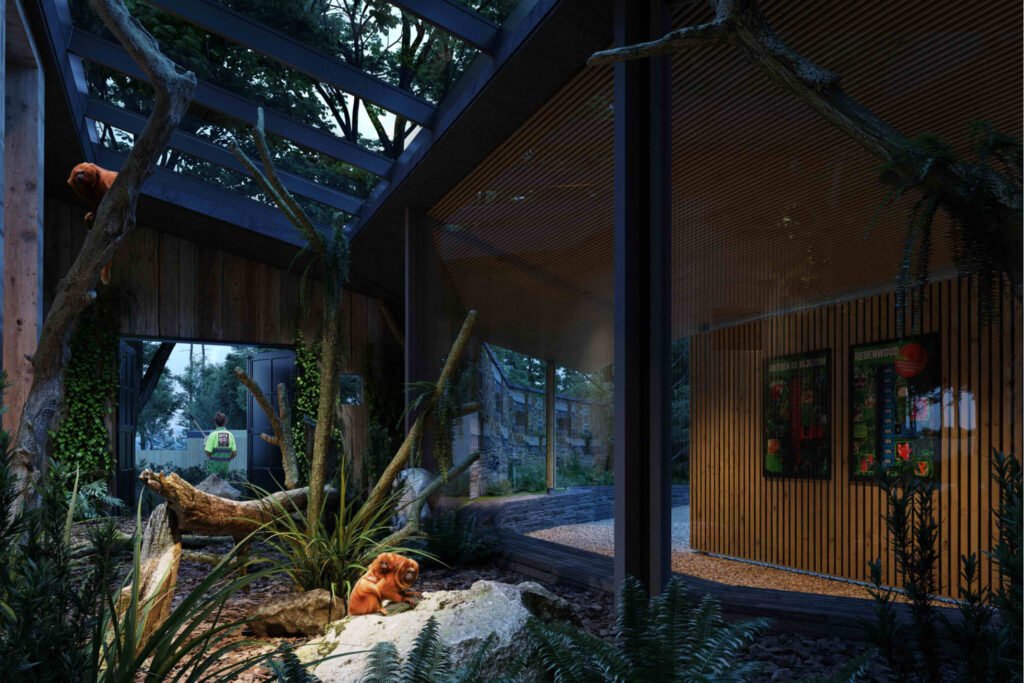

Milan: How else has Chinese culture influenced the way you practice and design?
Mainly in two ways. I’ve become much more flexible. Because here, the client can change their mind every other day.
And you can say, “But we agreed on such and so.”
And they’ll say, “Yeah, but I want it different now.”
“But, but, but…”
“Well, I still want it.”
So you just have to be flexible. The second way, I always compare with t’ai chi. You have to practice every day these really slow movements. But sometimes, you have to punch quickly or do some quick move. I feel that is how design works here. Projects take a long time to massage and go very slow, and then you have to go very fast.
Whereas in the West, everything needs to be planned regularly and evenly. When we started doing projects in the Netherlands, I was shocked to realize it was so slow.
They said, “We are very much in a hurry!”
“Okay,” I thought, “maybe two weeks, four weeks? What date is it now?”
“We have one year for the design process.”
“One year?” But they had it all mapped out. If the deadline is four weeks, I’m going to spend three weeks to kind of slowly massage ideas, think about it, maybe in the shower or what-not, and then (Martijn snaps his finger) in the last few days I put it together. I find that this intuition, Le Corbusier calls it “intuition,” the sum of one’s acquired knowledge, if you let it simmer and then pull it out, that’s more efficient.
Milan: Let’s talk about Buildings for Animals. What does Apenheul mean?
Apen means monkeys or primates in Dutch; it’s the plural of aap, a monkey. Heul is a traditional word to describe a safe place or place of refuge and care. So, together it means “A place of care and refuge for monkeys.” Quite appropriate, since the majority of the zoo’s collection is threatened primates. So the name in English translates to “Primate Park,” rather than a comprehensive zoo.
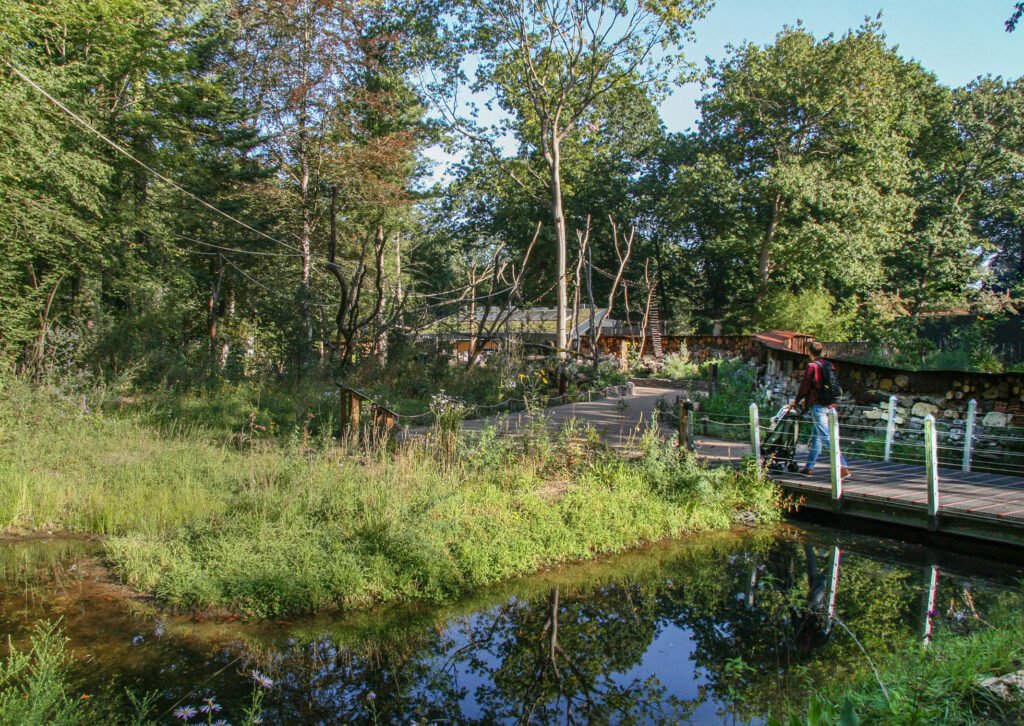

Milan: You worked at Apenheul as a young man, feeding and caring for a family of gorillas. When they asked you to re-design the zoo, what did you change? How different is it now from before?
They had a new director a few years ago and some of the old zookeepers I worked with told him that I existed. And they told me, “You should go talk to this guy because he wants to build a new gorilla island.
I was a bit hesitant and Han said, “We need to fly there immediately.”
I said, “But we don’t have any money.”
She said, “No, no, this has always been your dream, you need to go there like next week.”
So we did. We met with him and it was a very good click. Again, he was really embodying the values that we believe in. The zoo world, even the progressive zoos, can be really stuck in the ideas of fifty years ago.
We wanted to do something different and he had that desire as well and asked, “Martijn, what would be your dream if you could work on the zoo?”
I said, “I would really like to work on the large masterplan. Where is the zoo going to be fifty years from now? How can it set the standard for a new type of animal experience and teaching people about bio-diversity?” and so forth. And he said okay.
Rather than a zoo being a fenced up area where there are some animals, we used the fact that there are no predators in this area to stimulate the local insect life and local plant culture.
We started with the landscape as the barrier for all life and we worked on the waterways, the filtration—all the stuff you don’t see. I told them, “Oh, this is going to be a bad project for me because in the end, you don’t see any architecture that I’ve done.” (Chuckles)
But nobody goes to a zoo to see architecture. You come to the zoo to experience nature. We started with the smallest animals, the insects, the worms, the fish, and then added the monkeys, and this is the first time in the world that we created such a landscape where the people and the monkeys and the local biodiversity work together as one system.


Torres: You used only local plants? The gorillas and other primates don’t need plants that are alien to the Netherlands?
There were some exotic species there before, some trees and shrubs. We removed all of them, replaced them with native trees because we found during the research that if you have a native tree, it could support up to 350 species of insects in one tree. Whereas if you have an exotic tree, the number goes down to maybe five species of insects.
We figured the monkeys indeed are captive and have adapted to the life in their environment so they do eat plants and insects different from their country of origin. But to support their diet, we need to use native trees. And we even used some medicinal herbs because there is research to suggest that in nature, monkeys find particular medicinal herbs to treat themselves. So we were experimenting with that, which is also a first in zoos.
Torres: Oh, wow! What herbs did you plant?
I used to have a list… (Martijn swivels in his chair to look for it on the message board behind him.) Oh, this is a letter of someone in the zoo who wrote to me, “Hey, Martijn, last time we spoke, you talked about the insect hotel and here are some thoughts…” So it’s his suggestions.
I can’t find the list. I will email it to you.
Milan: You used plants instead of fences and other barriers to delineate spaces for animals and humans? How did you mitigate the stress caused by close proximity of strangers to the animals?
You know, people and monkeys are not natural enemies. They are small monkeys so they are not going to attack you, and you can keep the monkeys are in one area and the people in another through behavioral design. You make paths for the humans and place a barrier next to the path, maybe 50 centimeters, which helps define the path. A monkey can sit on the barrier but it must be clear for him to see, “Oh this is a path. If I want to go to the other side, I’d rather go across via this tree rather than go via the ground.” Now kids might want to walk on that raised barrier because it’s fun, so along the edge you plant bushes so the kids don’t go into the bushes into monkey area.
So it’s all of these little behavioral things. To make sure the monkeys don’t go to other areas of the zoo, we made this large insect hotel. It’s the world’s largest insect hotel, made from an old building that was on the site, with stones, logs, and stuff. That serves three functions. It functions as a divider, provides insects that the monkeys can eat, and because it looks like a nice wall, it’s decorative. So we try to make everything inclusive. We worked with biologists, with landscape specialists, and so forth. Designing a zoo in this way had not been done before.




Torres: How long did the entire process take?
The entire design process took one year. Construction also took one year. And we also designed the design process. I really advocated for that and the new director agreed it would really help if it were a participatory design process. So I flew to Holland every six or eight weeks. We had a three-day workshop so that everybody from the cleaners to the director, the management team, and marketing team could be a part of this. It was really exhaustive and everybody chipped in. It was not all my ideas.
For instance, when I told them it would be great to have this insect hotel, they said, “Well, if we do that, it would be good to put it at the edge then we don’t need to build a barrier between the monkeys and the people.”
And then I said, “Well, then they can climb over it.”
And then someone from the animal department said, “Yeah, but we can put some structure at the top of the insect wall so these monkeys cannot climb over it.”
So this one idea involved people from the landscape, animal, and hospitality departments. So you have a restaurant for humans on one side and then you have this monkey eating wall in really close proximity, about two meters. We have all checked for problems and there were none.
The people come into the area by a bridge because we built a small water feature. In theory, the monkeys can go over it because in the case of an emergency, they should be able to escape. But they know that that’s not good, so they don’t do that. They are also creatures of habit. So if you understand the behavior of both humans and animals; they can work very well together.
Torres: How do you keep people from tossing food over to the monkeys?
And at the entrance of the zoo, the monkeys walk free and you are not allowed to feed them. In Holland, the general public understand that that is not appropriate. And there is a zoo keeper walking there at busy times to make sure it doesn’t happen. But yes, I understand how that could be very difficult to enforce in other countries.
Torres: What about construction stressing out the animals with the noise and the earthmoving? Did you transfer them?
Yes. First of all, we made sure not to do any large landscape restructuring. We made sure all the earth we took out to make the canals was used immediately at the site again and we did not make any piled foundations so we did not need to do any big drilling because there are some sensitive species. Some species were temporarily removed. So it was a big shuffle, which was also challenging because we had to deal with the people flow as this was happening while the zoo was also open.
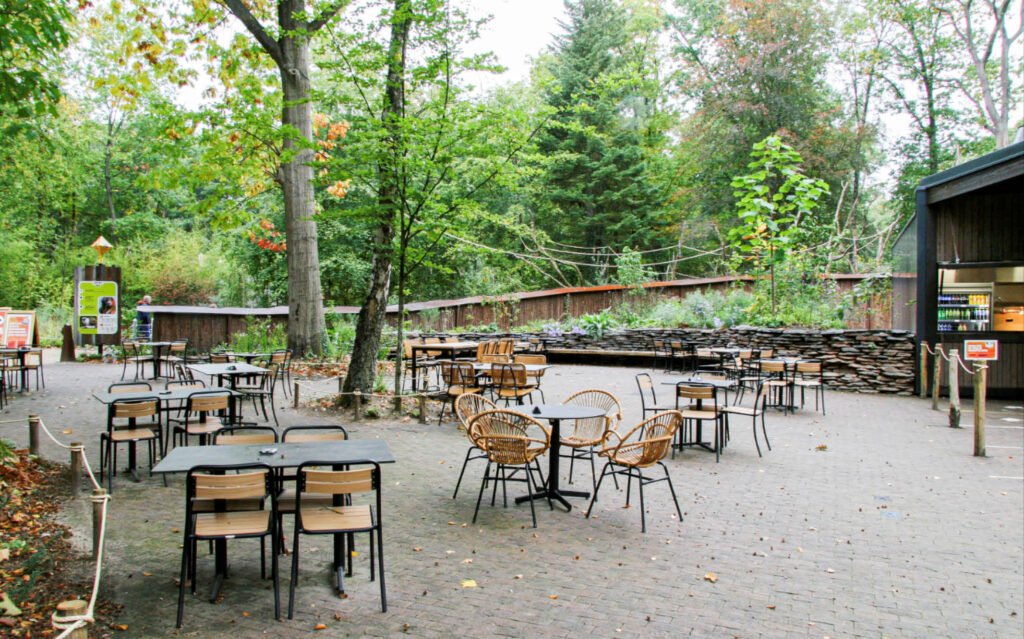

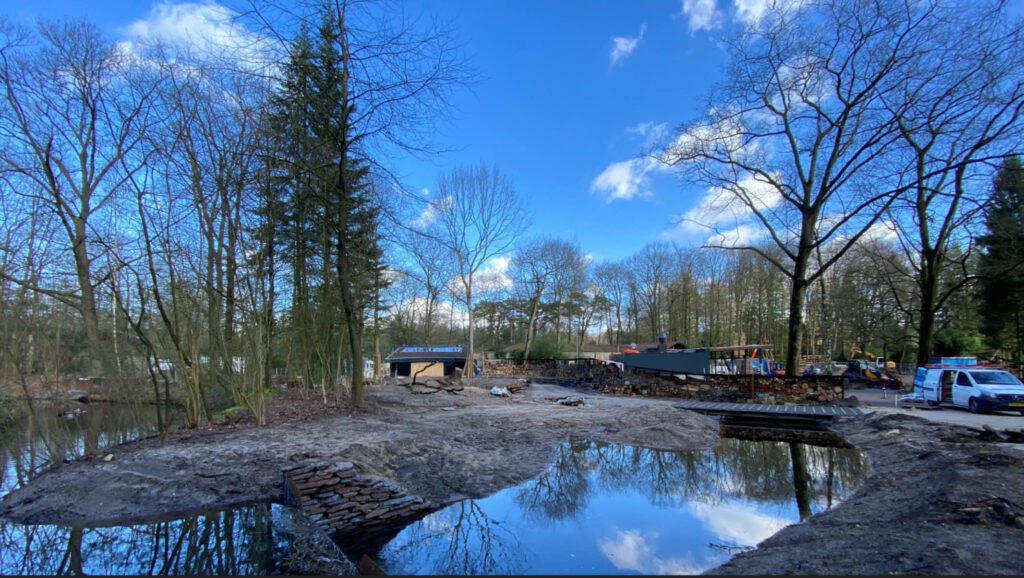

Milan: Apenheul’s website says they want to teach visitors to love and respect animals. How does the design help bring this about?
We talked a lot about that during our master planning strategy. Because in traditional zoos, they show different animals and you can see all of them like a collection. This changed to a more educational role, like, “We’re going to protect the wildlife and the rainforest, and we will tell you how to do it.”
We know now that people don’t want to hear that. They want to have a nice day out, they don’t want to be talked to like, “Oh, you are so bad! You shouldn’t drive your car, you shouldn’t fly.”
No, they don’t want to hear that. We did research with Apenheul’s marketing department, and the message doesn’t stick when people are in that mood, you know. They don’t want to be told off; they want to be encouraged. If they are in a joyful, positive spirit, they are very receptive and they want to do stuff. So we’ve changed the message from telling them what’s wrong to showing them what’s possible.
The insect wall is a perfect example of that. It shows people, “Look what we can do with insect life!”
Yes, it provides food and while everyone knows the dangers of climate change, I learned the loss of biodiversity is a much bigger threat to the world. The current rate of biodiversity loss, especially of insects, will much sooner effect the extinction of humans than climate change will. So that’s what we also wanted to show people. You can do something about this in your own landscape, in your own garden. Yes, it’s for the monkeys and they can eat from it, but it is also a really solid base for increasing bio-diversity in insect life.
The people see the monkey eating the insects and they see the flowers that the insects fly to, it’s nice and it’s beautiful, and at the end of the park, they say, “That’s great, I want to do contribute! What can I do?” We’re using emotional triggers rather than direct messaging. But you can’t see that in any photos on the website. I haven’t published this project yet, I’m not quite sure yet how to do that.
Torres: Aren’t there just crazy people who hurt animals?
Yes.
Torres: Does the design protect the animals against abuse?
No. Of course, there are people with bad intentions. It’s just like designing for children. You can design for maximum safety, but will that make the child happy? Majority of children are very well able to understand that they can fall—and you need to fall to understand that you can get hurt. So do you really want to protect them from anything and everything? Then the world is not liveable anymore.
You need to have a certain trust first. I feel that that is really important because if you start with trust, then bad things will happen less. But when you start to really guard against it, people become so paranoid things might happen.
There have been only two incidents in the past twenty years, two times that people tried to steal a monkey because some of the animals are very endangered—almost extinct—so they represent a lot of money on the black market. We increased security measures for their night enclosure. That’s all in place. I can’t go into detail, so yes, we guard against that. In general, however, we start with the belief that people are smart and kind.
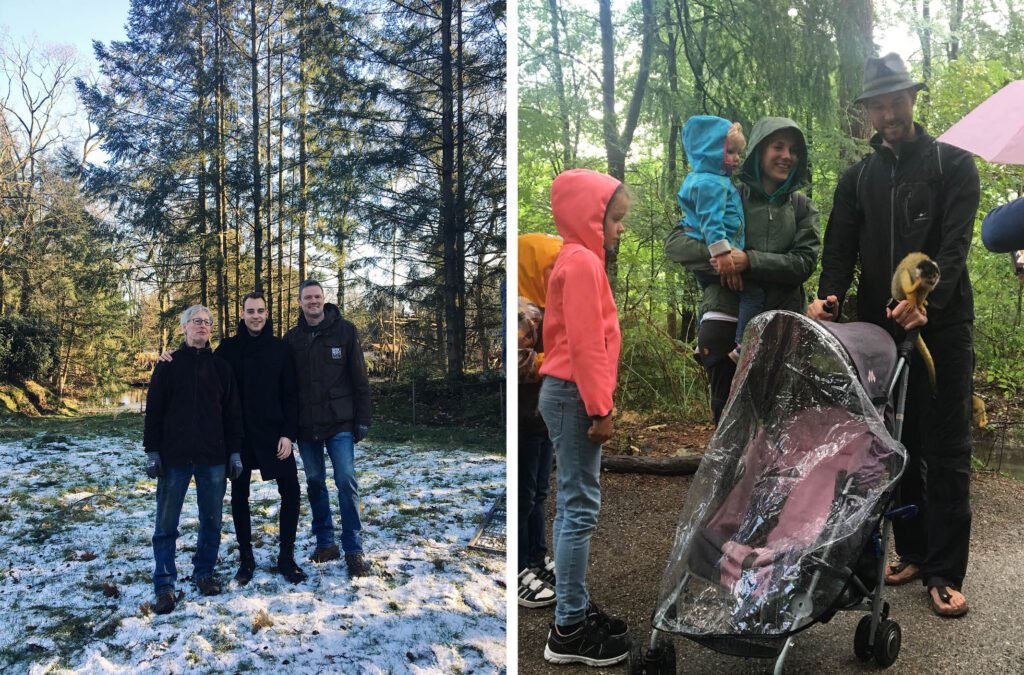

Torres: You’re making changes in your life and changing the world one building at a time, one client and one student at a time. But your work will never be done because the goal is the world as it should be. What are the measures of success in your lifetime? How do you not get discouraged?
These are important life questions and I’m too young to give a complete answer to that but I can comment on my current state. I read many years ago that happiness equals your expectations minus reality. It’s very true. If the reality is bad and your expectations are positive then you are going to feel unhappy. If reality is better than your expectations, then you are going to feel very happy.
So you can do two things. You can change reality, which is difficult, trust me! Or you can change expectations, which is relatively easy. My professor told me that in the beginning.
Because I asked him that, you know, “Why are you so relaxed? Shouldn’t you be worried about solving the housing crisis in China? Why are you not doing anything about it? You can do that.”
He said, “No, no, no. I cannot do that. I can’t.”
When you change your expectations, you feel less discouraged and become relaxed and happy. And from that positive place, you can envision, imagine, be free and inspire, I have found. So that’s a great starting point. Of course I get discouraged sometimes because I expect something and reality doesn’t match up. But I try not to have expectation or desire.
I used to think, “I’m going to win the Pritzker Prize, I want to win the Pritzker Prize, I need to win the Pritzker Prize.”
Who cares about the Pritzker Prize?
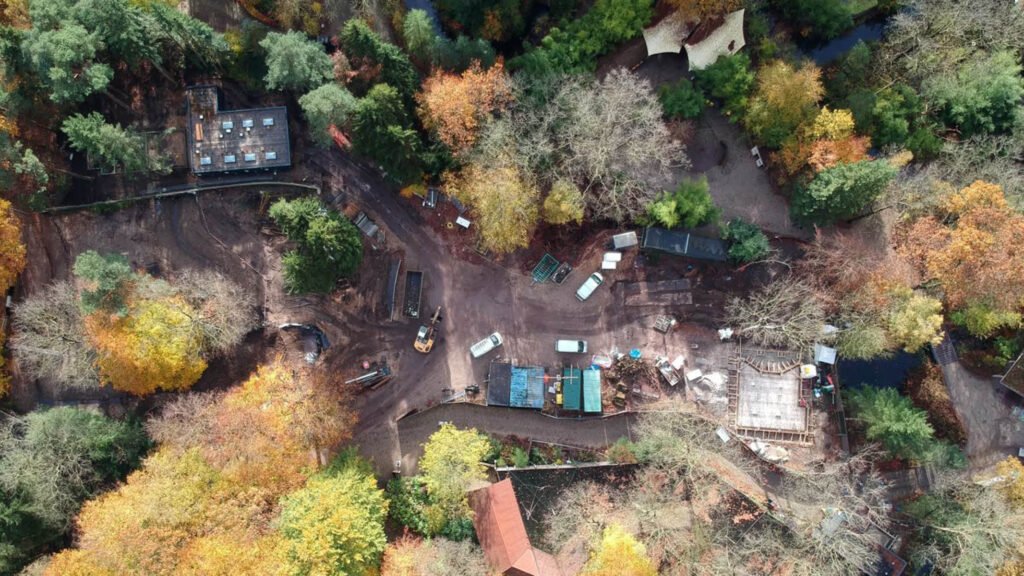



If I do what I believe in and I can inspire others to do that, that’s a measure of success. I see some of my students in Tsinghua, they come from all over the world, from Africa to Europe to South America, the Philippines, and Malaysia. And I like to do competitions with them, competitions from all around the world. Two years ago, two girls, one from Thailand and the other from Malaysia, and we were doing a skyscraper competition.
“I don’t believe in skyscrapers,” I told them. It was for the Council of Tall Buildings and Urban Habitats in Chicago. And these were two girls who had never visited Europe or the US and were quite timid and shy. And I was pretty tough, I said, “This is not good enough, grrh!”
In the end, they submitted and they got selected, eight of 400 entries. They were like, “Wow! Wow!” That was the best thing that happened in their lives, yeah?
Well, I said, “No. Now what we need to do is to make sure you convince the jury. Bjarke Ingels is going to be in the jury with all these important people. You need to tell them the story of who you are and what you believe, etcetera, etcetera.”
And they did. And I got a text in the middle of the night—“We won! We got the first prize!” And there was a photo of them with Bjarke Ingels and what-not.
I find that very rewarding. I love what I do and I’m going to do that—but if I can open the eyes of people like that around the world, that would be really meaningful. One of them is now starting to open her office in Malaysia. I am excited for her.
Torres: Thank you, Martijn! I’m so glad we got to talk! How about you, Heidrun, did you get what you wanted?
Milan: Yes, I learned many new insights.
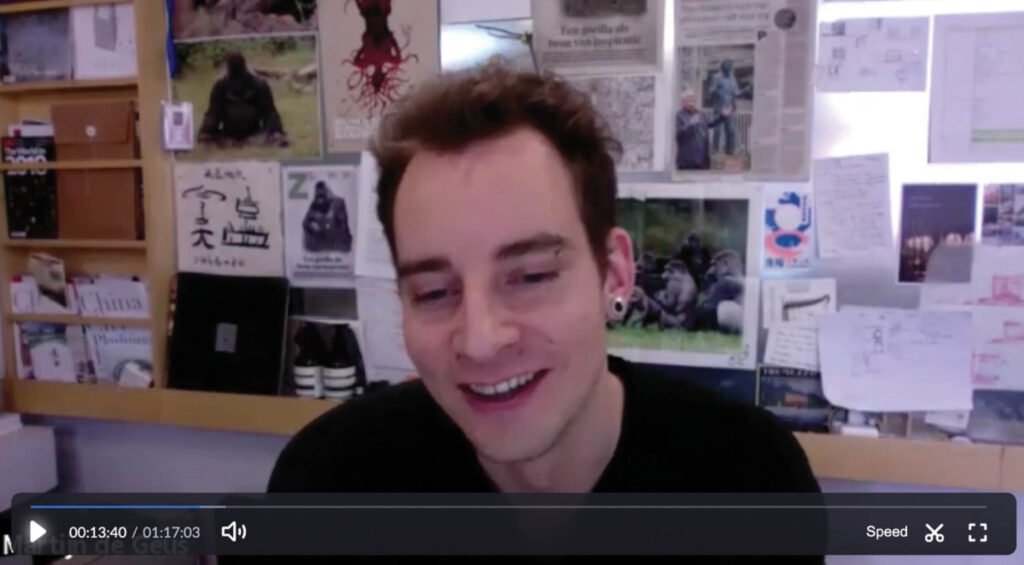

March 1, 2021
Dear Judith, Heidrun,
I was able to dig up the herbal plant list for you that we used as part of the ‘natural medicinal garden approach’ in our zoo project. I attached it in the ‘Apenheul’ folder. It’s quite an interesting and, in zoological circles, ground-breaking research that the zoo initiated several years ago, and which we applied with their zoological curator for the first time in a project like this.
Through previous research at Apenheul, they found that certain monkey species are able to find and select the appropriate herb for a particular condition they might be feeling at the time. This also means they won’t typically eat the herb as part of their routine diet, instinctively avoiding the bad side effects of over-eating a medicinal herb.
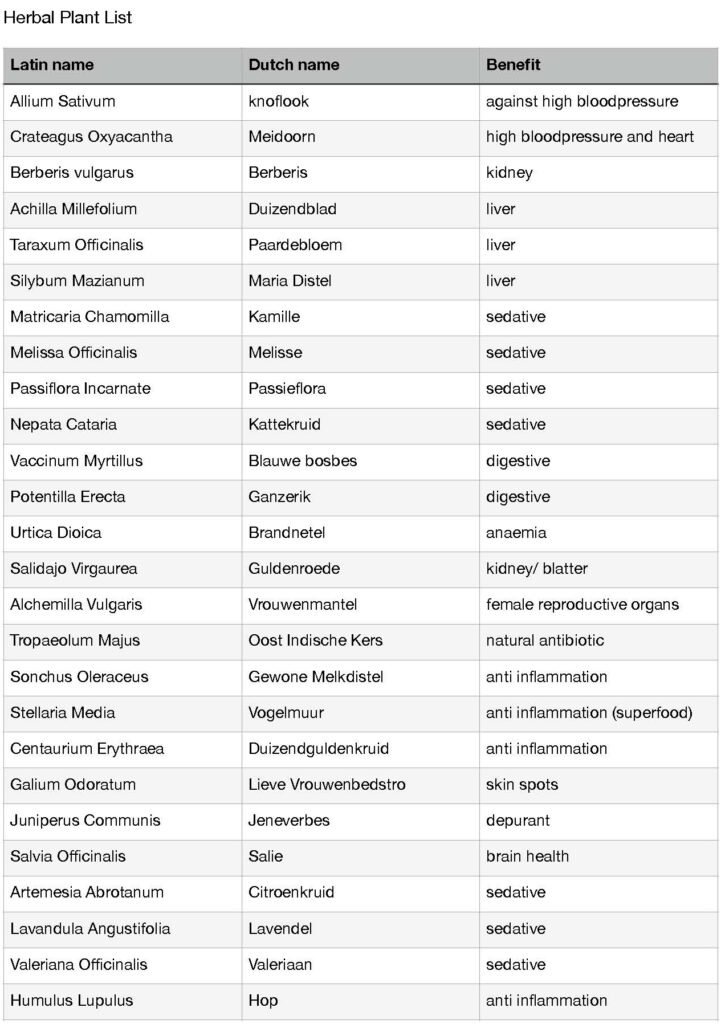

Debrief with Heidrun Milan
Hi, Heidrun! I’m so glad you chose to ask Martijn and Han about Buildings for Animals. Why were you attracted to it?
I am interested to learn about maison h’s design process and how they were able to provide safe spaces for both animals and humans. Designing for humans is quite difficult already, I supposed it is more challenging to design for animals who cannot verbally express their needs. I also believe animals should be in their natural habitat instead of keeping them inside a cage or built environment. I wanted to know how they delineated the spaces between animals and humans, and how Apenheul educates people about the environment and animal habitats.
You said you learned new insights, what insights are these?
Martijn’s design process resonates with my belief in the importance of social design. He used participatory planning methods by involving the zookeepers in the design process, by using their inputs as valuable data in designing a zoo for the present and the future. When he envisioned Buildings for Animals, he designed experiences rather than architecture, as he said, “Nobody goes to the zoo to see architecture.” It speaks of his confidence and humility as a designer, where he doesn’t feel the need to put his stamp on every project. I think this stems from his post-Western mentality.
Why did this resonate with you?
While I was still teaching in the university, our dean, Marianito Villero, gave me a book by Robert Sommer, Social Design: Creating Buildings with People in Mind. The concept of social design as human-centered, inclusive, democratic, and spaces with meaning and context left a strong impression on me as a young designer.
In my practice, I often worked with communities and it is always humbling to learn new insights from the grassroots by solving real-world problems. While we were working on Bakwit Kit Project (a flat-packed evacuation kit containing evacuation essentials), we used a participatory design process. In one of our focus group discussions with participants who experienced natural disasters, we asked them to draw their concept of home. An 11-year-old child drew a simple house surrounded by trees. What impressed me was when he explained in detail how these trees serve as a watershed, and as buffers from natural disasters. It was such a sophisticated ecological concept from a child!
Despite the inner battles between his Western self and post-Western self, I was impressed and moved by his naked desire to be a better person and the obvious love and admiration he has for his wife and professor. How about you?
Listening to Martijn discuss his ideas on inclusivity, creating places instead of architecture, and contemporary socio-cultural change gives me hope for the future of design. At the same time, I wish that the interior design curriculum here in the Philippines would include more subjects on behavioral sciences so that future designers would have an in-depth knowledge on human behavior.
Heidrun, what are your values and design philosophy?
We believe that the users are the core of our design and the design should be a reflection of the user’s culture and lifestyle. As an advocate of sustainable interiors, our works have strong Filipino elements with a modern yet environmentally sound approach. We design in context.
Our design philosophy is, “Experience Design, Designing Experience.” Design isn’t just meant to be experienced, experiences can be designed to help people feel happy and whole. To achieve this, we ask users to be our co-designers of the space.
I crafted this philosophy by asking, “What makes my projects work?” Looking at the users enjoying the interiors after we finish a project (often via our clients’ social media accounts), I observe how the spaces evolve. The user may add a new piece of furniture or sometimes change the layout. That’s fine with me because we design to be dynamic and adapt to the user’s evolving lifestyle. Our role is not to dictate how others should live but to provide them with the space and stimuli to experience positive emotions. •
Kanto.com.ph is a proud co-presenter of Anthology Festival 2021. This interview was produced in support of the Festival and its organizers, WTA Architecture and Design.


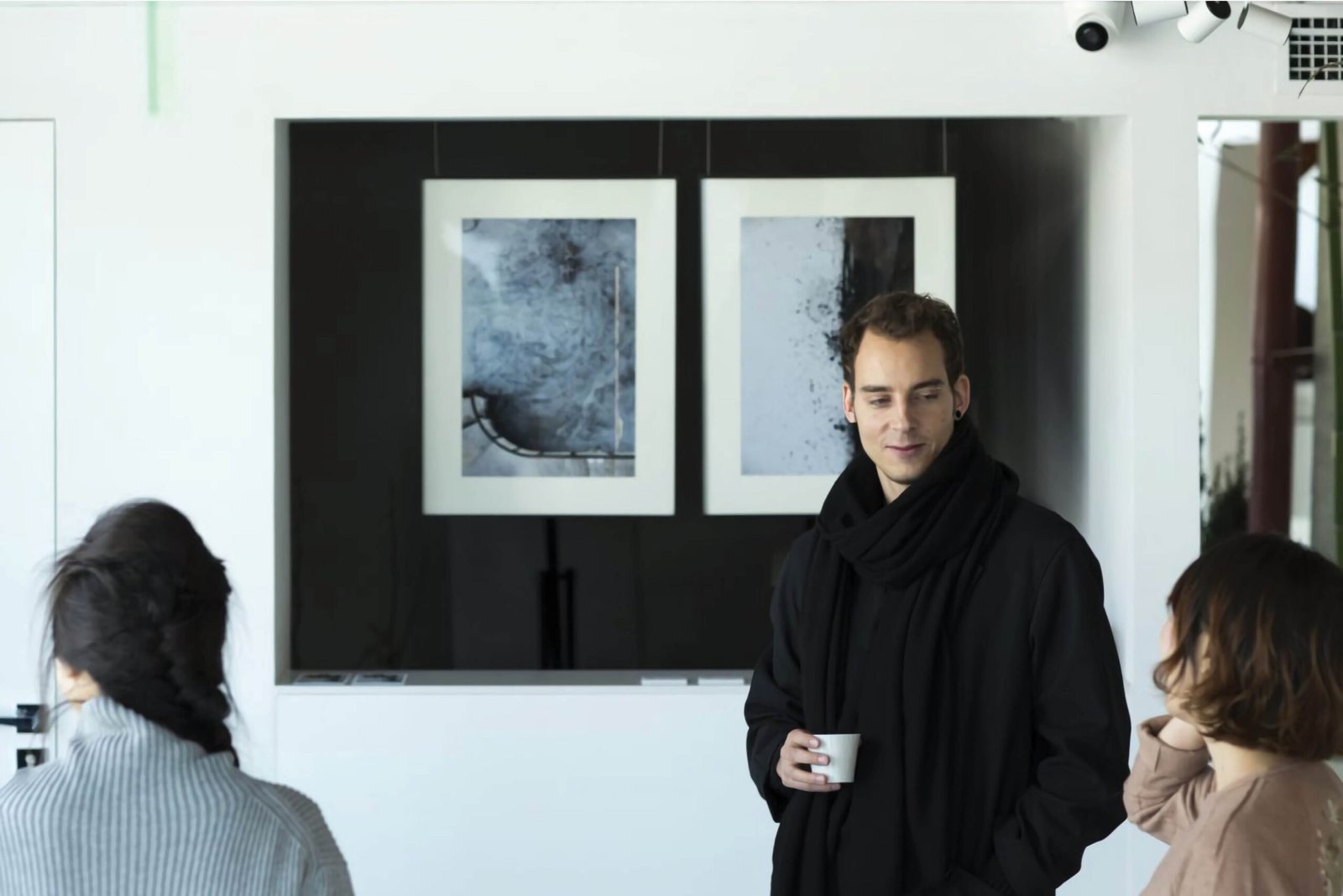

One Response